
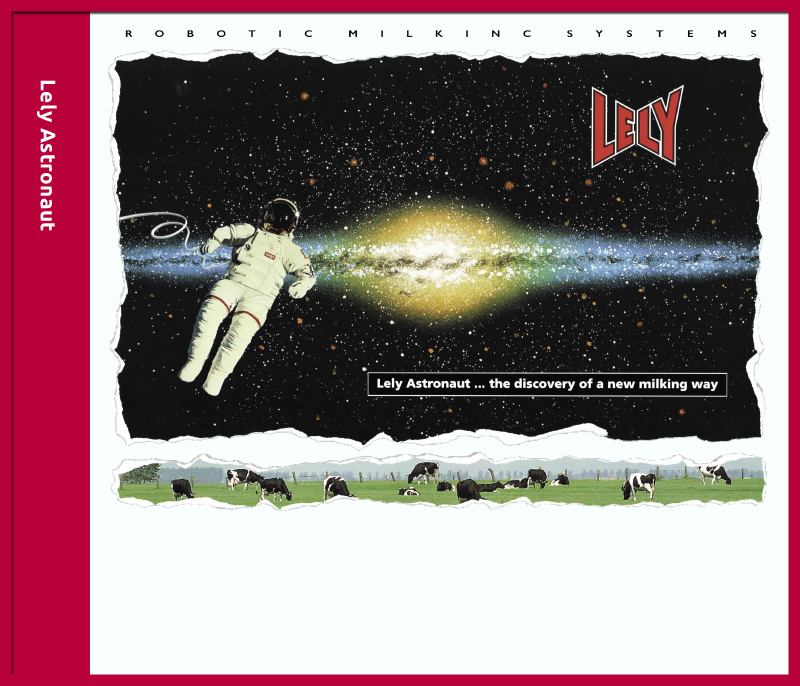
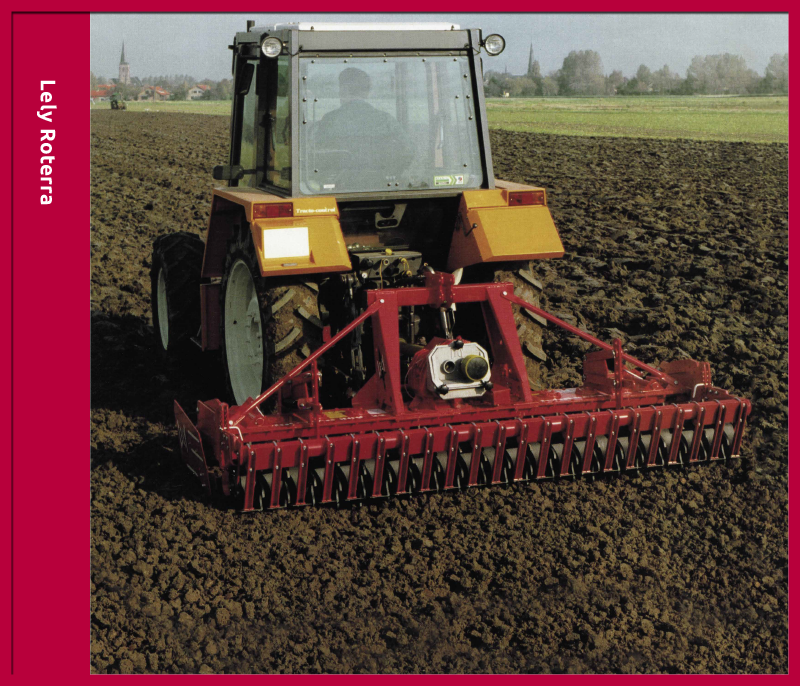
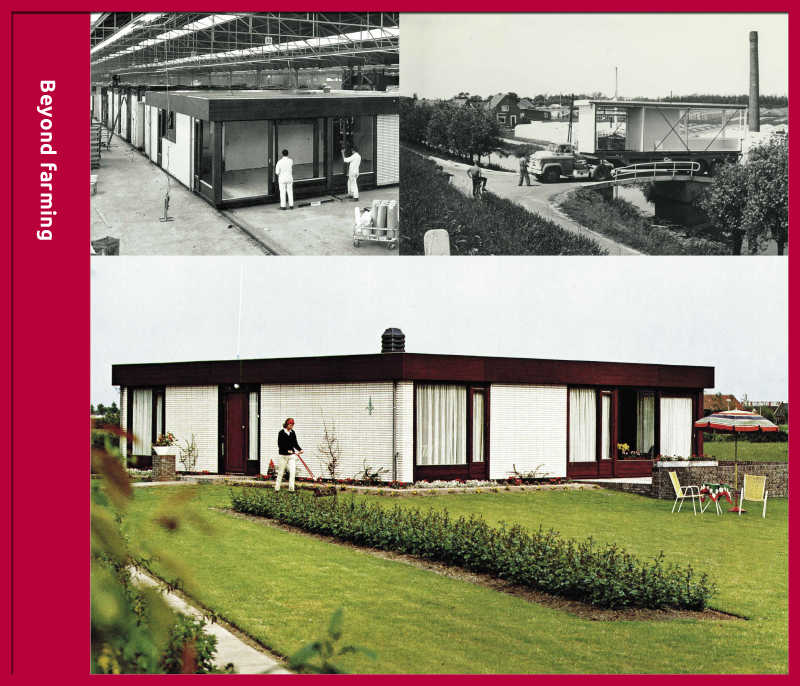
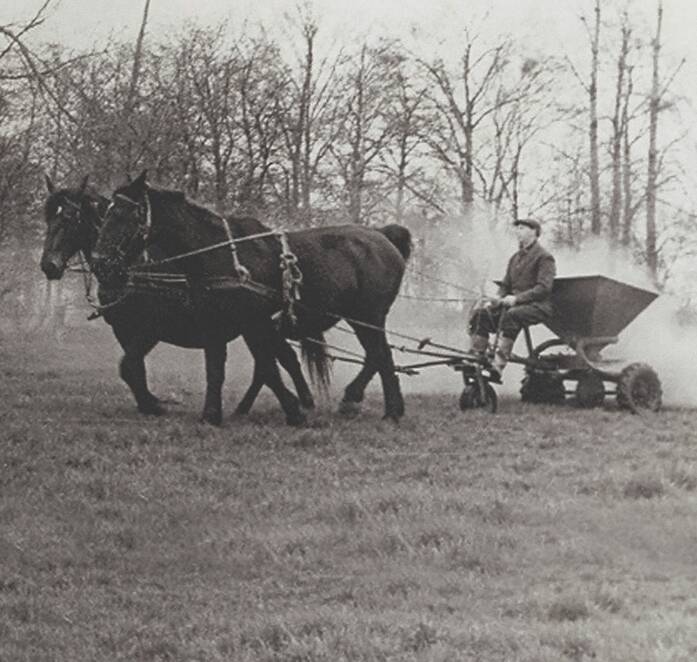
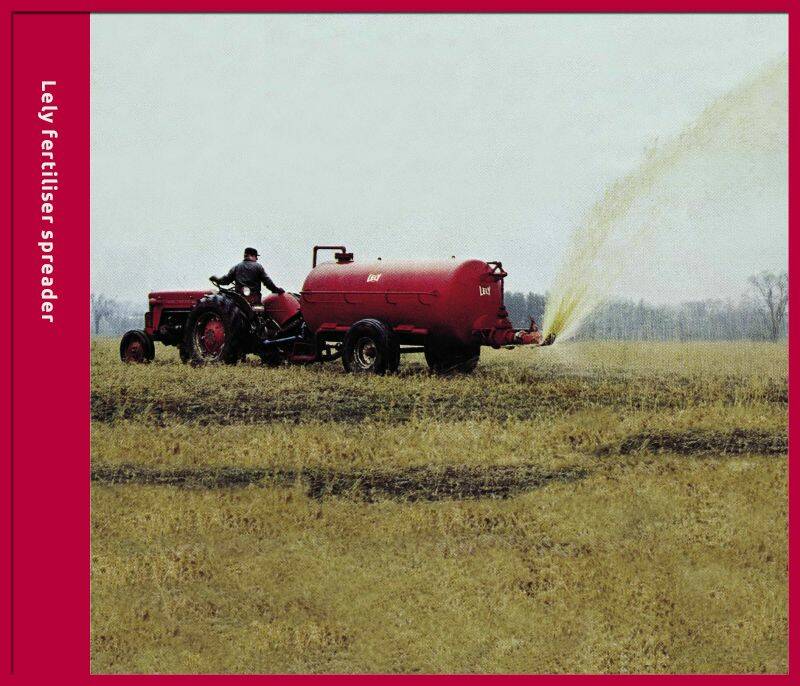
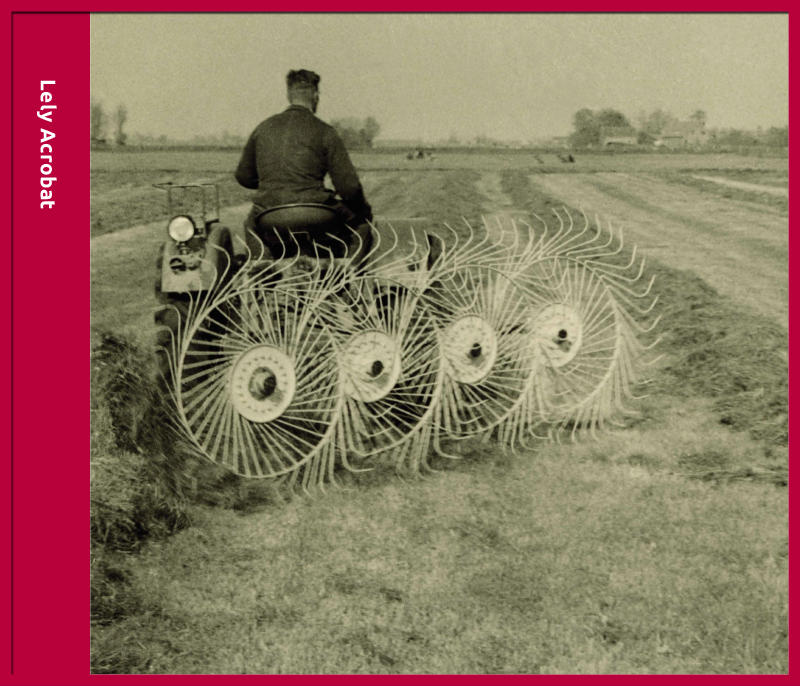

Lely Astronaut
Life changer (1992)
In the 1990s, we introduced the Lely Astronaut milking robot. An invention that proved to be groundbreaking on dairy farms.
The first ideas were laid down in patents in 1985, a first prototype was tested in 1992 and in 1995, we introduced the milking robot to the market. It was named ‘Lely Astronaut’ because of the maximum freedom. The teat cups are only connected with a cable to the machine, like an Astronaut in space to the space shuttle.
With the Lely milking robot, the cow can decide for herself when she enters the box to be milked and this is done fully automatically. The Lely Astronaut consists of a box with metal bars on one side and a robot arm. A camera determines the position of the cow while a laser determines the precise teat position. The robot arm can then connect seamlessly to the teats, even when the cow is not standing completely still.
During milking, the Astronaut collects numerous data about the cow. In this way, dairy farmers are able to detect in an early stage the status of the health of the cow. For the dairy farmer, the method not only provides a wealth of information but also healthier animals with a higher milk production. Tens of thousands of Astronauts are now working 24/7 in almost 50 countries.
Lely Roterra
Kicking off international growth (1968)
A power harrow with rotating tines for creating a seedbed after ploughing. Lely is the inventor of this type of agricultural machines.
Several sets of two tines were rotated, individually, around a vertical axis. This resulted in a much finer tillage compared to that created by a traditional drawn harrow with fixed tines.
The name Roterra became synonymous for this type of machines. Later, the Lely Roterra was renamed as the Lelyterra. In several parts of the world, it became a common saying after using the Lelyterra: ‘I have Lely-ed my land’.
The Roterra was licensed to many other manufacturers. In the early 1970s, Lely manufactured 10,000 machines per year and had, at the same time, around 15 licensees. To meet the high demand of this popular machine, the Roterra was the only product that was produced in a moving assembly line. The Lely Roterra power harrows have been produced from 1968 until 2002.
Prefab bungalows
Beyond farming (1962)
Our innovations are not limited to farming. We also introduced caravans and prefab houses.
In 1962, we started with building prefab houses in our factory in Maassluis. Piping, tiles, and utensils similar to those found in fully equipped kitchens were installed in prefab units in the factory. The bungalow could be installed in just two days on site by assembling different units. Each unit had standard sizes that fitted onto a single truck. Different bungalow models were available and even large motels were assembled with the units. Lely bungalows were known for having a straight bond of bricks at the outside. The different bungalow types had names of popular vacation locations: Riviera, Corsica, Rhodos, Majorca, Tahiti, Capri, Costa Brava, Lugano, Karinthië, Tirol.
Lely fertiliser spreader
The beginning of production (1957)
Spreading fertiliser by a rotating disc to create a wide working width. The rotating disk, with curved vanes for spreading fertiliser directly below the container, made the machine simple and robust. Initially, the fertiliser spreader was also available as a horse- drawn model. The fertiliser container has a typical and unique design, which has not been changed since then. The principle of a rotating spreading disk is still used in all modern fertiliser spreaders. Fertiliser spreaders have been manufactured since 1957 until present. From 1982 until 2002 they were made under the name Centerliner with 2 counter-rotating discs.
Lely Acrobat
The innovation that started it all (1948)
The invention of the finger wheel rake - the Acrobat -, is considered to be the start of Lely. The invention was patented on 2 June 1948. Large vertical rake wheels, which were ground-driven, made a simple and cheap but robust machine. It was particularly suited to raking grass and hay into a swath, but also used for turning crops. An important improvement was the addition of long flexible tines made of spring-steel, which could twist and adapt to obstacles. It was an extremely successful and heavily-patented product that formed the basis of the Lely company.
75 years red impact
5 innovative milestones
in our history
We are proud of our inventions. That is why we protect them with patents. Today, we have some 1,500 active patents at our name. This confirms our DNA: we are farming innovators!
It’s hard to choose a top 5, you need to see them all in the light of the right time frame. And some are, when you look back now, really innovative and still important now. For example our prefab bungalows. Prefab buildings are still often used. And at that time (1960-1980) revolutionary and really well thought. Or what do you think of the Lely Acrobat? This product is still produced in the same form as it was in 1955. Not by Lely anymore, but it was the start of our great company!

TOP 5
Lely Astronaut
Life changer (1992)
In the 1990s, we introduced the Lely Astronaut milking robot. An invention that proved to be groundbreaking on dairy farms.
The first ideas were laid down in patents in 1985, a first prototype was tested in 1992 and in 1995, we introduced the milking robot to the market. It was named ‘Lely Astronaut’ because of the maximum freedom. The teat cups are only connected with a cable to the machine, like an Astronaut in space to the space shuttle.
With the Lely milking robot, the cow can decide for herself when she enters the box to be milked and this is done fully automatically. The Lely Astronaut consists of a box with metal bars on one side and a robot arm. A camera determines the position of the cow while a laser determines the precise teat position. The robot arm can then connect seamlessly to the teats, even when the cow is not standing completely still.
During milking, the Astronaut collects numerous data about the cow. In this way, dairy farmers are able to detect in an early stage the status of the health of the cow. For the dairy farmer, the method not only provides a wealth of information but also healthier animals with a higher milk production. Tens of thousands of Astronauts are now working 24/7 in almost 50 countries.

Lely Roterra
Kicking off international growth (1968)
A power harrow with rotating tines for creating a seedbed after ploughing. Lely is the inventor of this type of agricultural machines.
Several sets of two tines were rotated, individually, around a vertical axis. This resulted in a much finer tillage compared to that created by a traditional drawn harrow with fixed tines.
The name Roterra became synonymous for this type of machines. Later, the Lely Roterra was renamed as the Lelyterra. In several parts of the world, it became a common saying after using the Lelyterra: ‘I have Lely-ed my land’.
The Roterra was licensed to many other manufacturers. In the early 1970s, Lely manufactured 10,000 machines per year and had, at the same time, around 15 licensees. To meet the high demand of this popular machine, the Roterra was the only product that was produced in a moving assembly line. The Lely Roterra power harrows have been produced from 1968 until 2002.
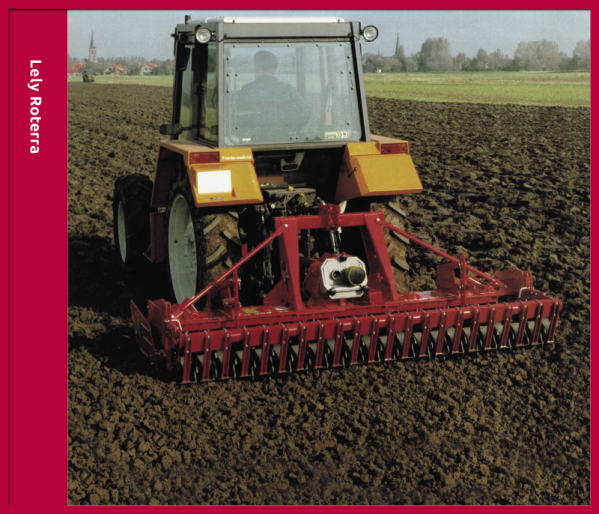
Prefab bungalows
Beyond farming (1962)
Our innovations are not limited to farming. We also introduced caravans and prefab houses.
In 1962, we started with building prefab houses in our factory in Maassluis. Piping, tiles, and utensils similar to those found in fully equipped kitchens were installed in prefab units in the factory. The bungalow could be installed in just two days on site by assembling different units. Each unit had standard sizes that fitted onto a single truck. Different bungalow models were available and even large motels were assembled with the units. Lely bungalows were known for having a straight bond of bricks at the outside. The different bungalow types had names of popular vacation locations: Riviera, Corsica, Rhodos, Majorca, Tahiti, Capri, Costa Brava, Lugano, Karinthië, Tirol.
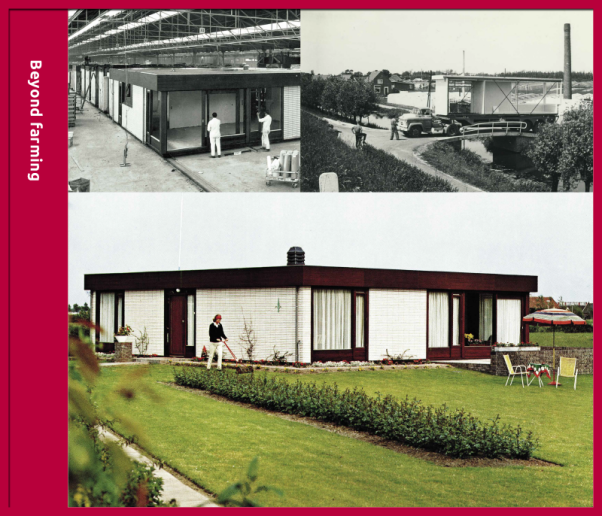
Lely fertiliser spreader
The beginning of production (1957)
Spreading fertiliser by a rotating disc to create a wide working width. The rotating disk, with curved vanes for spreading fertiliser directly below the container, made the machine simple and robust. Initially, the fertiliser spreader was also available as a horse- drawn model. The fertiliser container has a typical and unique design, which has not been changed since then. The principle of a rotating spreading disk is still used in all modern fertiliser spreaders. Fertiliser spreaders have been manufactured since 1957 until present. From 1982 until 2002 they were made under the name Centerliner with 2 counter-rotating discs.


Lely Acrobat
The innovation that started it all (1948)
The invention of the finger wheel rake - the Acrobat -, is considered to be the start of Lely. The invention was patented on 2 June 1948. Large vertical rake wheels, which were ground-driven, made a simple and cheap but robust machine. It was particularly suited to raking grass and hay into a swath, but also used for turning crops. An important improvement was the addition of long flexible tines made of spring-steel, which could twist and adapt to obstacles. It was an extremely successful and heavily-patented product that formed the basis of the Lely company.

75 years red impact
5 innovative milestones
in our history
We are proud of our inventions. That is why we protect them with patents. Today, we have some 1,500 active patents at our name. This confirms our DNA: we are farming innovators!
It’s hard to choose a top 5, you need to see them all in the light of the right time frame. And some are, when you look back now, really innovative and still important now. For example our prefab bungalows. Prefab buildings are still often used. And at that time (1960-1980) revolutionary and really well thought. Or what do you think of the Lely Acrobat? This product is still produced in the same form as it was in 1955. Not by Lely anymore, but it was the start of our great company!

TOP 5

